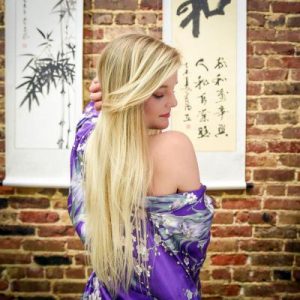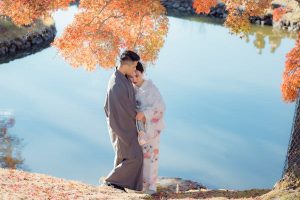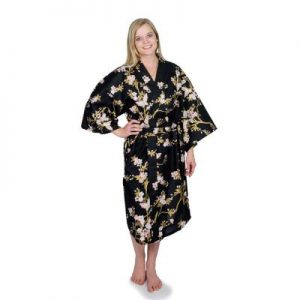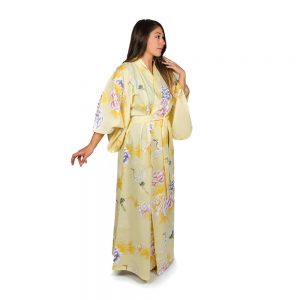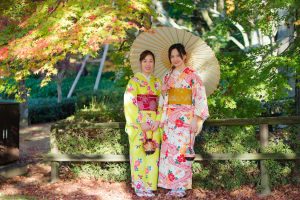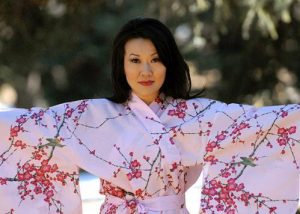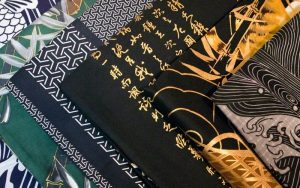Choosing the perfect kimono is more than just finding a garment; it’s an invitation to connect with centuries of Japanese tradition and craftsmanship. Whether you’re new to traditional attire or a seasoned enthusiast, selecting the right size kimono is crucial to ensure comfort, grace, and authenticity. That’s why Chopa is here to make the process effortless, offering a wide range of sizes for every body type while celebrating the beauty and culture of authentic Japanese kimonos.
Here’s our guide to finding your ideal fit when shopping for a kimono or yukata online.
Why Size Matters in a Kimono
A kimono is not just clothing; it’s a work of art meant to enhance your natural beauty. The wrong size can compromise its elegance and comfort. With the right fit, however, you’ll experience the full charm of a kimono as it drapes and moves gracefully with you. At Chopa, we understand this, and that’s why we offer an extensive range of sizes tailored for men, women, and children. Our thoughtful options include petite, traditional, tall, plus-size, Big and Tall, and even wider sizes for those desiring extra space and comfort.
Determining Your Kimono Size
Length Matters
To find the perfect length, start with a simple measuring tape:
- Measure from your shoulder – Place the measuring tape at the top of your shoulder and drop it down along your side. This measurement will show where the hem of the kimono will fall.
-
-
- Tip: Traditional kimonos often fall just above the ankles for a balanced, refined look.
-
- Consider your height – At Chopa, we provide varying lengths to suit individuals of all statures. From shorter lengths for petite frames to extended versions for taller wearers, there is something for everyone.
Girth and Fit
Next, measure your girth:
- Measure your hips or waist – Wrap the tape measure around the widest part of your hips or waist. This number will help determine which size offers the ideal overlap for a comfortable and flattering fit.
-
-
- Note: Always allow for extra space to overlap the fabric when worn, as kimonos are designed to wrap snugly around your body.
-
- Choose overlapping space wisely – This overlapping is what gives the kimono its iconic robe-like appearance, ensuring it feels secure while maintaining elegance.
Why Chopa is Your Go-To Kimono Shop
Shopping for a kimono online can feel daunting, but it doesn’t have to be. Chopa has been a trusted provider of authentic Japanese kimonos, yukata, and Happi Coats for years. Here’s what makes us stand out:
- Authentic Selection – We handpick every piece in our collection to embody the culture and craftsmanship of Japan. Our designs celebrate both tradition and contemporary style.
- Varied Sizes – Whether you’re petite, plus-size, or anywhere in between, Chopa ensures you’ll find a range of sizes to choose.
- USA-based Convenience – By choosing a USA-based retailer, you avoid the hassles of tariffs, customs fees, and lengthy shipping times. Your kimono arrives faster without hidden costs.
- Easy Returns – We understand that even with careful measurement, preferences can change. Our flexible return policy ensures your satisfaction.
- Expert Guidance – Unsure where to start? Our dedicated team is here to assist, making your shopping experience smooth and enjoyable.
Other Details to Keep in Mind
When selecting your kimono, also consider:
- Occasion: Are you wearing it casually at home, to a cultural event, or as comfortable loungewear? Yukatas, for example, are lightweight and perfect for summer.
- Color and Pattern: Your outfit should reflect your personality. Chopa offers an array of vibrant hues and traditional patterns to suit every taste.
- Accessories: Complete your look with an obi belt, tabi socks, or zori sandals. These elevate the traditional kimono aesthetic.
Experience the Chopa Difference
At Chopa, every kimono tells a story, a tradition, and a dedication to artistry. Whether you’re hosting a tea ceremony, attending a Japanese festival, or simply relaxing at home, our kimonos ensure a blend of comfort and elegance. With our step-by-step size guide and exceptional customer service, we guarantee a seamless and satisfying shopping experience.
Browse Chopa’s collection of authentic Japanese kimonos and yukata today to find your perfect fit. Shop Now and discover why we’re a trusted name among kimono enthusiasts. Celebrate tradition, experience elegance, and create lasting memories with the ideal kimono.



